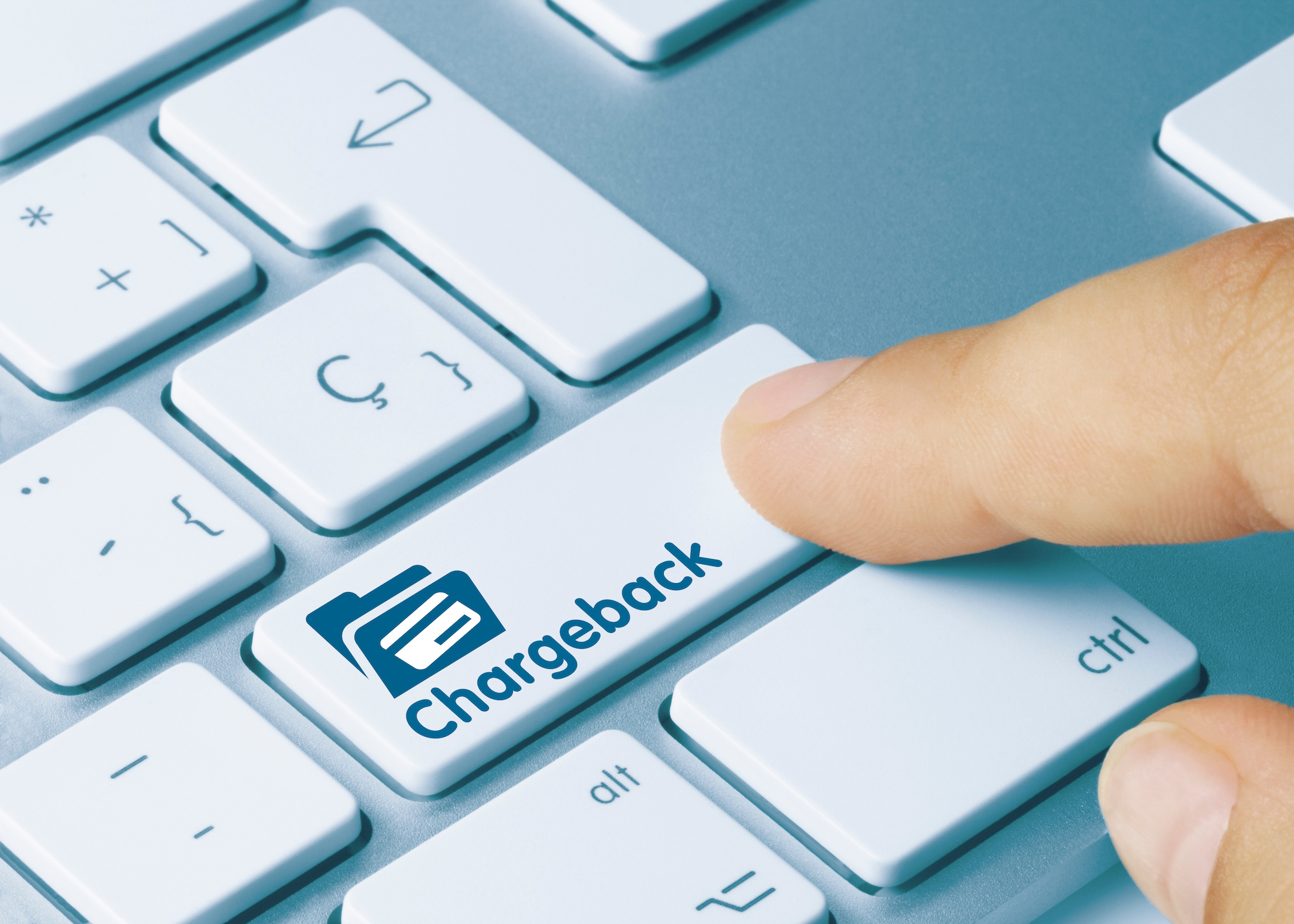Ultimate Guide to Chargeback Evidence Submission
Chargebacks happen when a customer disputes a card transaction, forcing the bank to reverse the payment. As a merchant, you must provide evidence to prove the transaction was legitimate. Without the right documentation, you risk losing money and damaging your business reputation.
Key Points to Get Started:
- Common Causes of Chargebacks: Fraud, billing errors, product dissatisfaction, or "friendly fraud" (60–80% of cases).
- Financial Impact: For every $1 in chargebacks, businesses lose $3.75 due to fees and operational costs.
- Evidence You Need: Transaction records, delivery confirmations, customer communications, and policy documentation.
- Deadlines: Merchants typically have 20–45 days to respond, depending on the card network.
Quick Tips for Success:
- Understand Reason Codes: Tailor your evidence to the specific dispute reason (e.g., fraud, canceled subscription).
- Collect Evidence Early: Save transaction details, customer emails, and delivery confirmations during every sale.
- Submit On Time: Missing deadlines means losing the case automatically.
- Organize Your Response: Use clear, concise rebuttal letters and well-organized documents.
Chargebacks can cost your business time and money, but with the right preparation and tools, you can protect your revenue and reputation.
Chargeback Evidence Requirements Explained
To effectively handle a chargeback, you need to start with the chargeback reason code. This alphanumeric code explains the reason behind the dispute and serves as a guide for gathering the right documentation. Think of it as a roadmap to build a solid case that convinces the card issuer to reverse the chargeback. Tailor your evidence to match the specific reason code – generic responses rarely succeed. This is especially important since over 50% of all chargebacks are filed for invalid reasons.
Chargeback Reason Codes and Required Evidence
Each card network has its own set of reason codes, but the core idea remains the same: your evidence must directly address the dispute reason. Here’s how to match your documentation to the most common reason codes:
- Visa Reason Code 10.4 | Mastercard Reason Code 4837 ("Transaction Not Authorized" Claims): Provide evidence of customer authorization, such as AVS and CVV matches, geolocation or IP logs, customer confirmations, records of prior undisputed transactions, and shipping information.
- Visa Reason Code 13.2 | Mastercard Reason Code 4853 ("Canceled Subscription" Claims): Include details like your cancellation policy, proof that the policy was disclosed to the customer, charge reminders, and any customer communication confirming their understanding of subscription terms.
- Visa Reason Code 13.6 | Mastercard Reason Code 4853 ("Credit Not Processed" Claims): Submit your refund policy, proof that the customer had access to it, records explaining why the credit wasn’t processed (if applicable), and any communication from the customer that contradicts their refund claim.
- Visa Reason Code 13.1 | Mastercard Reason Code 4853 ("Product Not Received" Claims): Focus on proving delivery. Provide tracking numbers, delivery confirmations, and customer communication showing agreement to the purchase. Include cardholder verification data and historical transaction records.
- Mastercard Reason Code 4854 ("Uncategorized" Claims): These cover broader disputes, so compile a wide range of evidence, including cardholder verification data, customer communications detailing the order, and historical purchase records showing the customer’s relationship with your business.
Types of Evidence You Need
To build a strong case, your evidence should fall into a few main categories, tailored to the specific reason code:
- Transaction Records: Include receipts that show the date, currency, and amount of the disputed items. Add payment verification data like AVS matches, CVV verification, and IP address logs to confirm the customer’s identity at the time of purchase.
- Customer Communication: Keep records of emails, chat logs, phone call summaries, or other written correspondence. These can demonstrate customer acknowledgment of purchases, delivery addresses, or satisfaction with the products.
- Delivery Documentation: Provide shipping confirmations with delivery dates, addresses, and tracking numbers. For digital goods, usage logs showing customer access and engagement can serve as proof of delivery.
- Policy Documentation: Maintain copies of terms and conditions, return policies, and cancellation procedures. Include evidence that customers were shown these policies during checkout.
Since Visa’s Claims Resolution initiative in 2018, evidence requirements have become stricter. For example, under Visa Reason Code 10.4 (Other Fraud – Card Absent Environment), you must include proof of the cardholder’s identity, such as positive matches from an address verification service and card verification value.
| Evidence Type | Relevant Data |
|---|---|
| Receipt | Date, currency, and amount of disputed items |
| Shipping Documentation | Delivery date and shipping address |
| Cancellation Policy | Key sections of the policy |
| Customer Communication | Customer name and related messages |
Submission Deadlines and Rules
Once you’ve gathered your evidence, timing is everything. Missing a submission deadline means losing the case automatically, with no exceptions. Card networks have strict timeframes that vary, so staying organized is crucial.
- Visa: Merchants typically have 20 days to respond, starting the day after the transaction processing date. Cardholders generally have 120 days to file disputes.
- Mastercard: Merchants have 45 days to respond at each stage of the chargeback process, counted from the transaction date. Cardholders also generally have 120 days to file disputes.
- American Express: Merchants are given only 20 days to respond at each stage, requiring quick action.
- Discover: Cardholders are encouraged to file disputes within 120 days, with merchant response times following similar patterns.
One essential rule: submit all your evidence at once. You won’t get another chance to add or amend documentation after your initial response. Make sure everything is well-organized, clear, and easy to read. Brief summaries explaining the purpose of each piece of evidence can help, but avoid overwhelming the reviewer with unnecessary details.
Finally, coordinate with your acquiring bank or payment processor to understand their notification processes. Some offer early warning systems or pre-dispute collaboration opportunities to resolve issues before they escalate into formal chargebacks.
Next, we’ll explore how to organize and prepare your evidence to streamline the dispute response process.
How to Organize and Prepare Your Evidence
Creating a strong defense against chargebacks requires preparation long before you ever receive a dispute notification. Successful merchants know this and make evidence collection a regular part of their operations. Considering that the average merchant has a chargeback win rate of just 45%, being proactive can mean the difference between recovering lost revenue and taking a financial hit.
Collecting Evidence During Each Transaction
The key to a strong chargeback defense is gathering evidence at every stage of a transaction. Start as soon as a customer places an order and continue through delivery and beyond. Every interaction could hold critical information to counter a dispute.
- Track key customer data at checkout: Collect the customer’s IP address, AVS (Address Verification System), and CVV (Card Verification Value) data. If the same IP address has been used for past, undisputed purchases, it can help establish the buyer’s intent to purchase.
- Archive all customer communications: Save emails, chat logs, and phone call records. These might include details that counter a dispute, such as a customer asking about delivery dates, which shows they wanted and expected the product.
- Document transaction details: Keep records of the date, currency, amount, and product descriptions. Save screenshots of the checkout page showing pricing, product information, and any special terms. For subscriptions, keep signup confirmations and billing communications on file.
- Track delivery carefully: For physical goods, collect tracking numbers, delivery confirmations (preferably with signatures), and shipping addresses. For digital products, maintain logs showing when and how customers accessed their purchases. This can be crucial for disputes claiming the product was "Not Received."
Tools for Managing Evidence
As your business grows, managing evidence manually becomes increasingly difficult. This is where chargeback management software can make a big difference. These tools can automate key processes like tracking disputes, submitting evidence, and resolving cases, while integrating seamlessly with your existing systems [11].
- Look for software with strong automation capabilities to simplify evidence collection, dispute filing, and case monitoring.
- Ensure the tool integrates smoothly with your payment processor, ERP system, and retail platforms to keep operations running smoothly [11].
Many modern tools also use AI and data analytics to streamline workflows and reduce financial losses [12]. For instance, a luxury fashion retailer used such technology to prevent nearly 12,000 fraudulent disputes, saving $7.5 million in a single year. Similarly, a home improvement retailer stopped around 16,000 chargebacks, protecting $15.5 million.
Once your evidence is digitally organized, you’ll be ready to assemble a strong response package.
Building Your Response Package
After gathering all the necessary evidence, the next step is to create a clear and persuasive response package. When you receive a chargeback notification, this package will include a rebuttal letter and supporting documentation tailored to the dispute code.
- Write a focused rebuttal letter: Clearly explain the transaction, the dispute reason code, and why the chargeback is invalid. Include key details like your business name, merchant identification number (MID), reason code, and case number. Keep the letter concise but persuasive, detailing why the original transaction was legitimate.
- Organize your evidence effectively: Arrange documents in chronological order and group them by type – such as receipts, customer communications, policies, and system logs. This makes it easier for reviewers to follow your argument. Ensure all text is readable and images are clear, using accepted formats like PDF, JPEG, or PNG.
- Provide visual context: Include screenshots of customer interactions with your website, such as landing pages, order checkouts, payment pages, and shipping timelines. These visuals help reviewers understand the customer’s experience and confirm their agreement to your terms.
sbb-itb-8c45743
The Chargeback Submission Process
Once your response package is ready, the next step is to submit your evidence within the required deadlines set by the card networks. Since each network has its own rules, it’s important to understand these differences to strengthen your case.
How to Submit Your Evidence
Start by reviewing the specific submission guidelines for the card network handling your dispute. Evidence must be submitted electronically in accepted formats like PDF, JPEG, or PNG. Your submission should include a clear and concise rebuttal letter. This letter must contain essential details such as your business name, merchant identification number (MID), reason code, and case number.
Avoid including links or prompts for further contact, as card issuers will not follow them. Make sure all text and images are clear and easy to read, even in black-and-white fax transmissions. Focus on essential documents only – like proof of authorization, delivery confirmation, and key policies. Highlight critical details by circling or emphasizing them to make your points stand out. Keep your submission brief and to the point, ensuring everything is easy to follow and understand.
With your evidence submitted, the next step is to understand how review times and deadlines affect the chargeback process.
Review Times and Final Decisions
Once submitted, your dispute enters a structured review phase. On average, the entire chargeback process takes between 75 and 120 days, though this can vary depending on the card network and the complexity of the case.
Response deadlines for merchants are much shorter. For example, Visa, American Express, and Discover allow up to 20 days to respond, while Mastercard offers up to 45 days per phase. However, acquirers and processors often impose their own deadlines, which can be as short as 5–10 days. Always confirm the exact deadline with your processor to avoid losing the case automatically.
Resolution times depend on the nature of the dispute. Fraud-related cases generally take 45–60 days, while disputes caused by merchant errors are often resolved within 20–45 days. Visa, for instance, aims to finalize most disputes within 30 days. However, factors like fraud allegations, complex cases, slow responses, high dispute volumes, arbitration, and communication issues can extend the timeline. Submitting your evidence promptly can help speed up the process for everyone involved.
Remember, each stage of the chargeback process resets the deadline clock. If your case progresses to pre-arbitration or arbitration, new deadlines will apply.
Evidence Types Comparison
Here’s a breakdown of different evidence types and their effectiveness in various disputes:
| Evidence Type | Best For | Strengths | Weaknesses |
|---|---|---|---|
| Transaction Receipts & Authorization | All dispute types | Shows customer authorization, including CVV/AVS details | Doesn’t confirm delivery or customer satisfaction |
| Delivery Confirmation | "Product Not Received" disputes | Provides proof of delivery with tracking numbers | Not useful for digital products; doesn’t confirm correct item delivery |
| Customer Communications | Service disputes, refund claims | Highlights customer intent and satisfaction | May include conflicting statements; can be lengthy |
| Digital Access Logs | Digital product disputes | Proves customer accessed or downloaded the product | May be too technical for reviewers to interpret |
| Signed Delivery Receipts | High-value physical goods | Strong proof of delivery and receipt | Not always available; adds shipping costs |
| Terms of Service/Policies | Policy-related disputes | Confirms customer agreement to terms | Only effective if clearly written and prominently displayed |
Digital evidence, such as screenshots of customer interactions on your website (e.g., landing pages, checkout processes, and payment confirmations), can be very effective in demonstrating customer engagement and agreement to your terms.
Customer communication records can also be helpful, especially if they show satisfaction or acknowledgment of receiving the product. However, be cautious about including messages that might unintentionally support the customer’s claim, such as complaints about product quality or delivery delays.
Always tailor your evidence to the specific dispute reason. For example, delivery confirmation is crucial for "Product Not Received" cases but irrelevant for disputes about duplicate charges. Submitting unnecessary evidence can weaken your case and suggest a lack of understanding of the issue at hand.
How Secured Payments Helps with Chargeback Management

Secured Payments enhances your chargeback defense by offering tailored solutions for high-risk merchants, integrated tools for evidence management, and expert consulting services. Managing chargebacks effectively requires the right mix of technology, expertise, and strategy.
Solutions for High-Risk Merchants
Merchants in high-risk industries face unique hurdles, especially when chargeback rates exceed 1%. At this point, businesses often encounter higher fees – ranging from 2.5% to 5.0% per transaction – and additional requirements like rolling reserves. If your chargeback rate surpasses this threshold, your business likely falls into the high-risk category.
Secured Payments offers specialized high-risk merchant accounts designed to tackle these challenges. These accounts come equipped with tools like real-time monitoring and chargeback alerts, allowing businesses to address risks promptly. Fraud prevention and chargeback mitigation strategies are customized to align with your industry and specific business model.
Payment Solutions for Evidence Management
Having the right evidence is critical when disputing chargebacks. Secured Payments’ integrated payment solutions automatically capture and store vital transaction data, ensuring you’re prepared to respond effectively.
The SecureGlobalPay payment gateway integrates with standalone chargeback management tools, creating a seamless system for dispute resolution. This setup ensures all transaction details – such as authorization codes, CVV checks, and customer communication records – are well-organized and accessible when needed.
For e-commerce merchants, the platform also collects digital engagement data, including login timestamps, download history, and website interaction patterns. This data can be crucial for disputing claims like "product not received" or demonstrating customer satisfaction through continued service use.
Expert account managers work with you to optimize evidence collection, helping you identify the most relevant documentation for your business. They ensure your systems consistently capture this information across all transactions, strengthening your chargeback responses.
Consulting Services for Chargeback Prevention
The best way to manage chargebacks is to prevent them altogether. This is especially important given that chargeback fraud cost businesses an estimated $20 billion in 2021. Secured Payments’ consulting services focus on addressing the root causes of chargebacks before they happen.
The consulting team analyzes chargeback patterns to identify problematic trends and develop targeted prevention strategies. Key areas of focus include:
- Streamlining transaction processes
- Improving customer communication and billing clarity
- Implementing fraud detection tools tailored to your business
- Coordinating evidence collection systems
"Every chargeback you don’t fight is a guaranteed loss… but how do you actually fight back and win? The key to successful chargeback representment is compelling evidence. The stronger the evidence, the better the odds that the chargeback will be reversed." – Ben Scrancher
With the average merchant reporting a 45% chargeback win rate, expert guidance can make a significant difference. Secured Payments’ consulting team helps you refine your evidence preparation and submission strategies, improving your chances of success. They also track important metrics – like chargeback ratios, win rates, and resolution times – to measure and enhance the effectiveness of your approach.
Summary and Key Points
Dealing with chargebacks effectively requires careful planning, accurate evidence gathering, and timely action. By 2025, chargebacks are expected to cost U.S. merchants a staggering $13.8 billion, with every dollar lost translating into $2.40 in fees and operational expenses. Below is a breakdown of strategies that can bolster your chargeback defense.
Chargeback Evidence Strategies Summary
To improve your chances of successfully disputing chargebacks, it’s essential to rely on proven evidence collection methods. A solid understanding of chargeback reason codes is critical, as tailoring your evidence to these specific codes yields far better results than generic responses.
Key practices include keeping thorough records from the moment of transaction, adhering to strict response deadlines, and establishing organized evidence collection systems. Preventing disputes before they arise is always more cost-effective than managing them after the fact. Tools like clear transaction documentation, fraud detection systems, and open communication with customers can help resolve potential issues early.
"The key to successful chargeback representment is compelling evidence. The stronger the evidence, the better the odds that the chargeback will be reversed." – Ben Scrancher
Staying up to date with card network policies is also vital, as evidence requirements change frequently. Merchants who implement efficient processes, prepare comprehensive response packages, and submit documentation on time consistently achieve better outcomes compared to those who react to disputes without preparation.
How Secured Payments Supports Your Business
Secured Payments builds on these strategies by offering tools and services designed to strengthen your chargeback defenses. With its automated evidence collection, specialized solutions for high-risk merchants, and expert consulting, Secured Payments transforms chargeback management into a proactive effort to protect your revenue.
The SecureGlobalPay system captures critical transaction details – like authorization codes, CVV checks, and customer communications – automatically. This ensures you’re always prepared to respond to disputes. Given the time and effort required to challenge chargebacks effectively, having the right systems in place can significantly improve your success rate.
For businesses dealing with higher chargeback rates, Secured Payments provides high-risk merchant accounts with advanced tools like real-time monitoring and chargeback alerts. These features help address problems quickly without disrupting your payment processing.
Additionally, Secured Payments’ consulting services emphasize prevention. By analyzing chargeback trends, they identify root causes and recommend targeted solutions. Preventing chargebacks not only saves the transaction amount but also eliminates the associated fees and operational costs.
With dedicated account managers tracking key metrics like win rates and resolution times, Secured Payments helps businesses create sustainable chargeback management systems. These systems protect revenue while maintaining positive customer relationships, ensuring long-term success.
FAQs
How can I effectively organize and submit chargeback evidence to increase my chances of winning disputes?
To increase your chances of winning chargeback disputes, start by keeping your records in order. Tools like your CRM or order management system can help you store key documents such as transaction receipts, proof of customer authorization, delivery confirmations, and communication records. Having everything easily accessible is a game-changer when time is of the essence.
When it’s time to submit evidence, make sure it aligns with the specific chargeback reason code. Keep your documentation focused, relevant, and directly tied to the issue at hand. Strong evidence – like shipping details or signed agreements – can play a critical role in swaying the outcome in your favor. By staying organized and providing clear, targeted responses, you can greatly improve your chances of success.
What steps can merchants take to prevent chargebacks, and how important is customer communication in this process?
Merchants can lower the chances of chargebacks by putting clear return and refund policies in place, verifying orders, and providing top-notch customer service. Maintaining detailed records of transactions, shipping information, and customer interactions is crucial – not just to avoid disputes, but also to have solid evidence ready if a dispute arises.
Open communication with customers plays a huge role in avoiding misunderstandings. Quick responses to inquiries, sending billing reminders ahead of time, and keeping customers informed about their purchases can go a long way in reducing dissatisfaction. By addressing concerns early and proactively, businesses can build trust and significantly decrease the risk of chargebacks.
What are the best tools and technologies to help businesses efficiently manage chargeback evidence, especially when handling a high volume of disputes?
Managing chargeback evidence can be tough, especially for businesses juggling a high volume of disputes. However, using modern tools and technology can make the process smoother and lead to better results.
Some platforms come with automation features that take care of tasks like collecting evidence, organizing documentation, and crafting responses tailored to specific dispute requirements. These tools often sync with your existing systems, cutting down on manual effort and saving you precious time. Plus, they can boost your chances of winning disputes by ensuring that all necessary evidence is submitted accurately and on schedule.
For businesses facing a large number of disputes, adopting technology that emphasizes automation and scalability is a smart way to stay efficient and safeguard your revenue.




